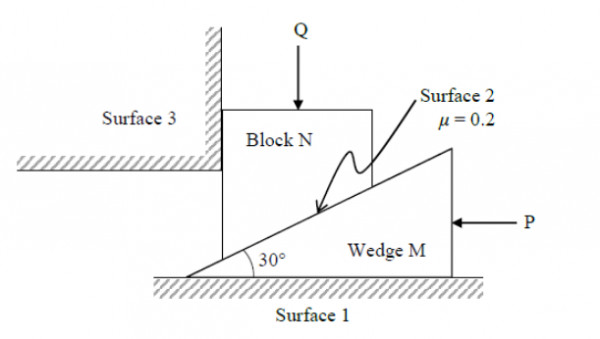A wedge $\text{M}$ and a block $\text{N}$ are subjected to forces $\text{P}$ and $\text{Q}$ as shown in the figure. If force $\text{P}$ is sufficiently large, then the block $\text{N}$ can be raised. The weights of the wedge and the block are negligible compared to the forces $\text{P}$ and $\text{Q}$. The coefficient of friction $(\mu)$ along the inclined surface between the wedge and the block is $0.2$. All other surfaces are frictionless. The wedge angle is $30^{\circ}$.

The limiting force $P$, in terms of $\text{Q}$, required for impending motion of block $\text{N}$ to just move it in the upward direction is given as $P=\alpha Q$. The value of the coefficient ‘$\alpha$’ (rounded off to one decimal place) is
- $0.6$
- $0.5$
- $2.0$
- $0.9$